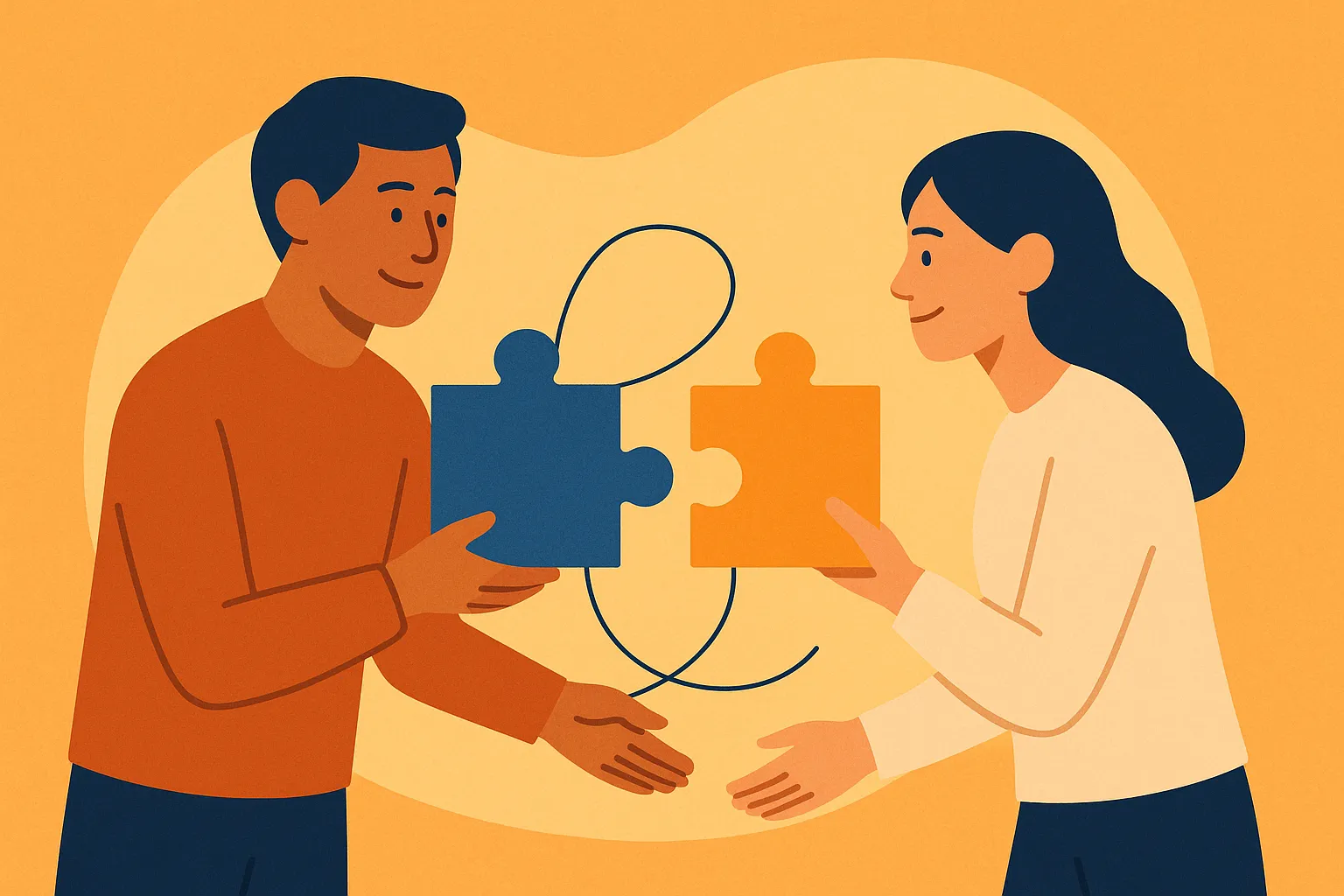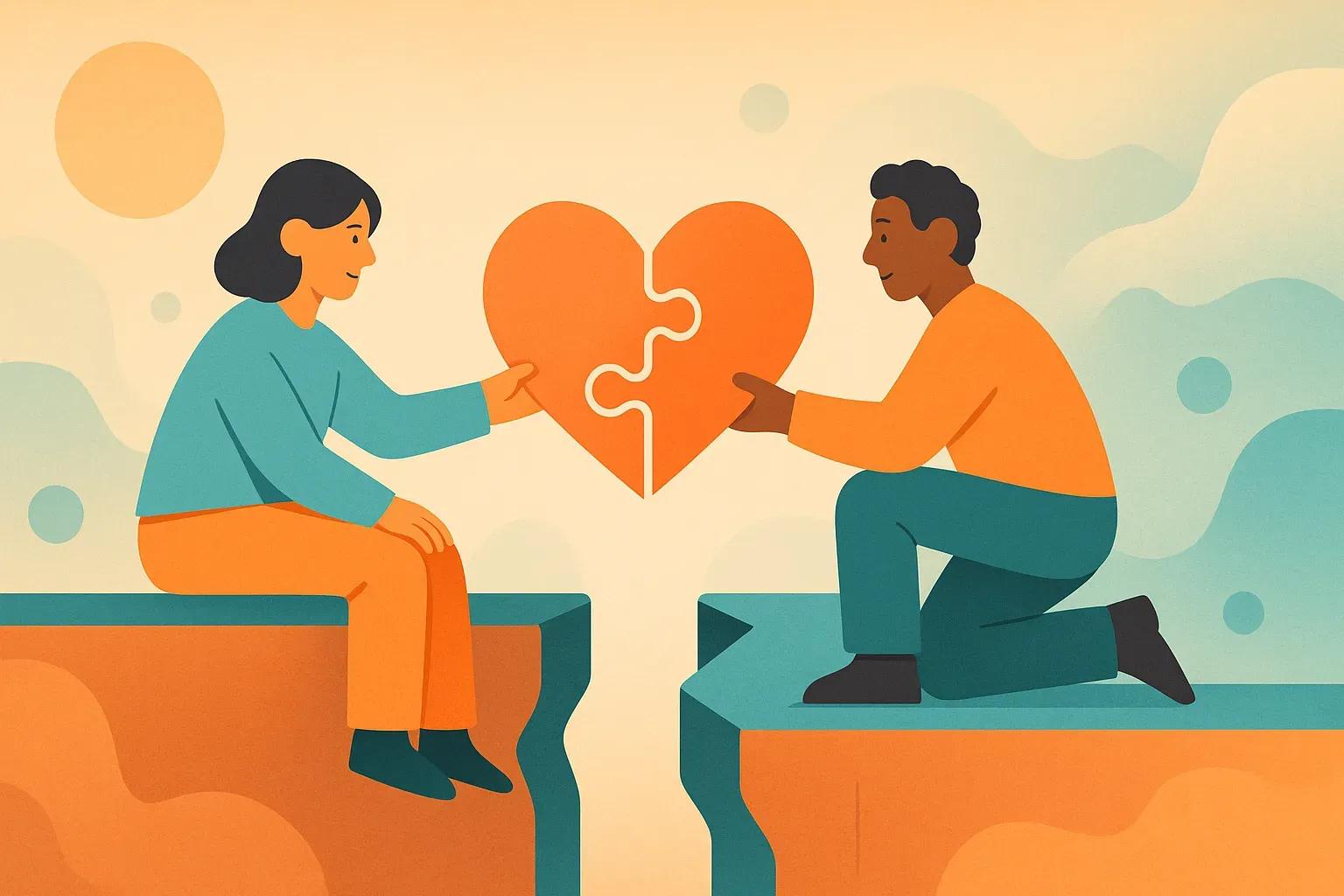
Shirley and I were sitting on opposite ends of the couch, both scrolling our phones in silence. When she went to bed without saying goodnight, I didn't even look up from my screen.
That's when it hit me: We had become roommates.
The late-night conversations that used to make hours feel like minutes? Gone. The excitement I felt when I heard her key in the door? Replaced by indifference. Now we could barely manage small talk about groceries and weekend plans.
I panicked and did what most people do: planned a grand romantic gesture. Expensive restaurant, perfect playlist, heartfelt speech I'd practiced in the mirror for weeks.
The result? An awkward evening that made us both painfully aware of how disconnected we'd become. I'd thrown money and effort at the symptom while completely missing the real problem.
Then I realize that you can't manufacture chemistry with grand gestures. The spark doesn't disappear because you stopped doing romantic things—it disappears because you stopped being genuinely curious about each other.
The Real Reason Of the Fading Sparks and Why Your “Efforts” are Pointless
What nobody tells you about long-term relationships: The spark doesn't fade because the magic is gone. It fades because you've both stopped evolving in each other's eyes.
Think about it. In the beginning, everything about your partner was a mystery waiting to be solved. Their quirky habits were endearing. Their opinions surprised you. Even their Netflix preferences felt like fascinating insights into their soul.
But somewhere along the way, you started believing you "knew everything" about them. You stopped asking follow-up questions. You stopped sharing your own evolving thoughts and dreams. You both became predictable to each other.
Research on relationships shows that couples who maintain what he calls "self-expansion" – continuing to grow and discover new things together – report significantly higher relationship satisfaction over time. The problem isn't that you've been together too long. The problem is that you've stopped being curious about who each other is becoming.
"The spark isn't something you find – it's something you create through genuine interest in each other's inner world."
Most couples try to fix this with date nights and romantic gestures, but they're decorating a house with a cracked foundation. You can't reignite passion without reigniting curiosity.
But Here's the Hope: This Can Still be Turned Around
I know you've probably tried the typical advice already. More date nights. Better communication. Scheduled intimacy. Maybe you've even considered couples therapy or relationship retreats.
Here's what actually works: Instead of trying to recreate the past, focus on rediscovering each other in the present.
This isn't about bringing back who you used to be together. It's about falling in love with who you're both becoming. The spark you're missing isn't hiding somewhere in your relationship history – it's waiting to be created through genuine rediscovery.
The 5-Step Approaches that Actually Work:
Step 1: Stop Trying to Fix and Start Getting Curious
Why this matters: Most people approach a relationship rut like it's a problem to solve rather than a signal that growth has stagnated. When you focus on "fixing" things, you're operating from a deficit mindset that creates pressure and desperation.
Instead, approach your relationship like you're meeting an interesting person for the first time. Because in many ways, you are.
😯 How you can put curiosity into practice:
- Ask questions you've never asked before: "What's something you've been thinking about lately that you haven't told me?"
- Pay attention to small changes in their behavior, interests, or perspectives
- Share something about yourself that you've never shared before
- Notice when you're making assumptions about what they'll say or do
What most people get wrong: They ask surface-level questions like "How was your day?" and expect deep insights. Real curiosity requires vulnerability. Ask about their fears, dreams, internal struggles, or evolving perspectives.
Personal Example: When I started asking Sarah about her work frustrations (instead of just "How was work?"), I discovered she'd been considering a career change for months. That conversation led to three hours of talking about dreams and fears I never knew she had.
🤔 Don’t know if what you’re doing is right? Want to know what questions to ask? Click here to get an AI relationship advisor to help you out!
Step 2: Create New Experiences Together (But Not What You Think)
Shared novel experiences create what psychologists call "arousal attribution" – your brain associates the excitement of new experiences with your partner. But most couples pick the wrong kinds of new experiences.
You don't need expensive trips or extreme adventures. You need experiences that challenge you both to see each other differently.
🎯 Here are some suggestions for your activities:
- Take a class together where you're both beginners (cooking, dancing, language learning)
- Volunteer for a cause neither of you has worked with before
- Attend events where you'll meet new people together (networking events, community gatherings)
- Try activities that require teamwork and problem-solving (escape rooms, hiking with navigation challenges)
What most people get wrong: They think "new experiences" means romantic dates or expensive activities. The key is choosing experiences where you'll both be slightly outside your comfort zones and see each other handle new challenges.
🤔 Not sure which activities would work best for your specific situation? Want personalized suggestions based on your relationship dynamics and interests? Click here to get tailored advice from an AI relationship advisor.
Step 3: Break Your Communication Patterns
You and your partner have fallen into conversational ruts. You discuss the same topics in the same ways, with predictable responses. Breaking these patterns forces you both to show up differently.
💡 Specific pattern breakers:
- Change your physical environment for important conversations (go for walks, sit on the floor, talk in the car)
- Institute "phone-free" time daily where you can't default to distracted half-conversations
- Take turns choosing one topic per week to explore deeply together
- Practice the "yes, and..." rule from improv – build on each other's ideas instead of immediately offering solutions or judgments
What most people get wrong: They think good communication means talking about problems or feelings. Sometimes the best communication happens when you're exploring ideas, dreams, or random curiosities together.
Example conversation starter: "If you could master any skill instantly, what would it change about your life?" Then actually listen to understand their inner world, not to respond with your own answer.
🤔 Not sure which Communication Pattern breaking method works best for your relationship? Every couple has different communication habits and comfort zones. Click here to get personalized communication strategies tailored to your specific dynamic!
Step 4: Rediscover Physical Intimacy (Without the Pressure)
Physical connection and emotional connection feed each other, but most couples approach physical intimacy like it's separate from everything else. When the spark is gone, forced physical intimacy feels awkward and disconnected.
🫂 The non-pressure approaches you can try:
- Focus on non-sexual physical connection first: hand-holding during conversations, shoulder touches while cooking, hugs that last longer than three seconds
- Create opportunities for physical closeness without expectations: massage each other's shoulders while watching TV, dance in the kitchen while making dinner
- Pay attention to how physical affection naturally emerges from emotional connection
- Communicate openly about what you both need without making it about performance or frequency
What most people get wrong: They either avoid physical intimacy completely because it feels forced, or they try to schedule it, which kills spontaneity. The goal is to rebuild comfort with casual physical connection.
🤔 Feeling awkward about rebuilding physical intimacy? Every couple's comfort levels and boundaries are different. Click here to get tailored advice on how to approach physical reconnection in a way that feels natural for both of you!
Step 5: Maintain Individual Growth
The biggest spark-killer is when both partners stop growing as individuals. You can't be endlessly fascinating to each other if you're not becoming more interesting people individually.
🌱 How to maintain individual growth:
- Pursue personal interests and hobbies independent of your partner
- Set individual goals that challenge you to develop new skills or perspectives
- Maintain friendships and social connections outside your relationship
- Share what you're learning and experiencing individually with your partner
What most people get wrong: They think being in love means doing everything together. Actually, having separate interests and growth experiences gives you new things to share and discuss.
Personal example: When I started learning Spanish (something Sarah had no interest in), I found myself sharing funny language-learning stories and cultural insights I was discovering. It gave us new things to talk about and she got to see me struggle and succeed at something completely outside her experience.
What If I Have Other Concerns?
I know what you might be thinking right now.
"This sounds great in theory, but what if my partner isn't interested in putting in this effort?"
"What if we've grown apart too much for this to work?"
These concerns are completely valid. Not every relationship can or should be saved, and it's true that this approach requires both people to be willing participants.
But the thing is: Often when one partner starts genuinely changing their approach - becoming more curious, breaking patterns, focusing on growth - it naturally invites the other person to show up differently too. You can't control their response, but you can control how you show up.
Your Next Steps Forward
Getting the spark back isn't about recapturing some perfect moment from your past. It's about choosing to see your partner as an evolving, interesting person rather than a familiar comfort object.
This process requires patience. You might not see dramatic changes immediately, and some attempts at deeper connection might feel awkward at first. That's normal and okay.
The question is: Are you willing to get curious about who your partner is becoming, and are you committed to becoming someone worth being curious about?


